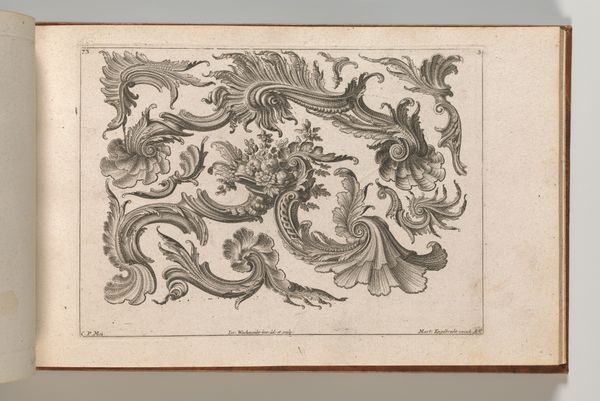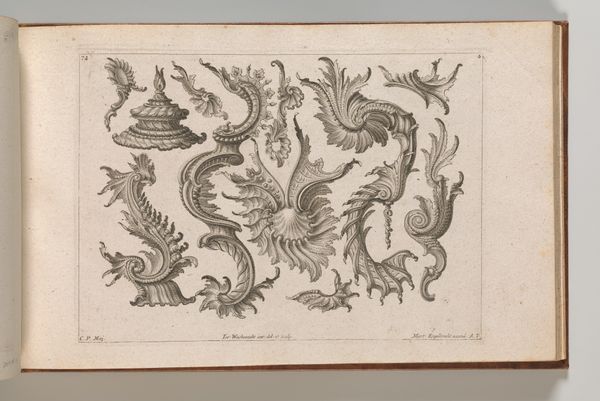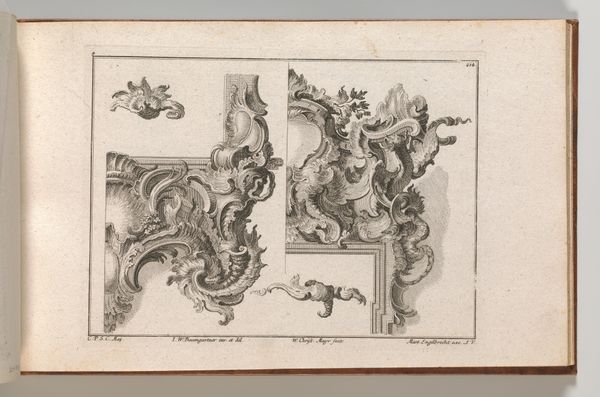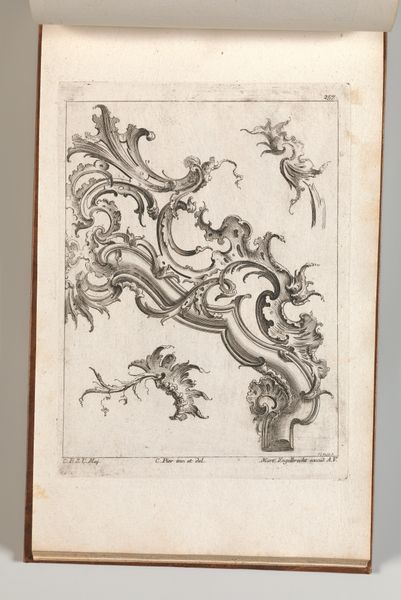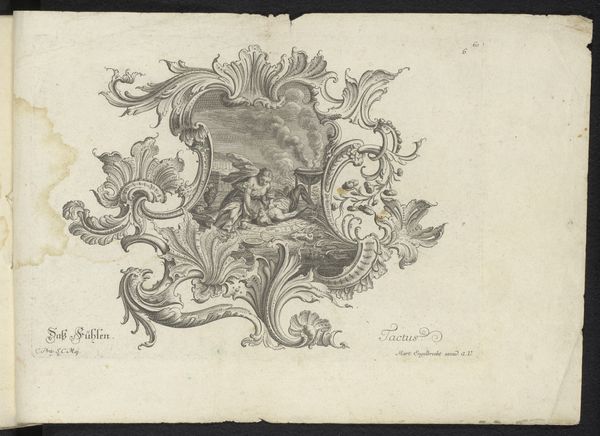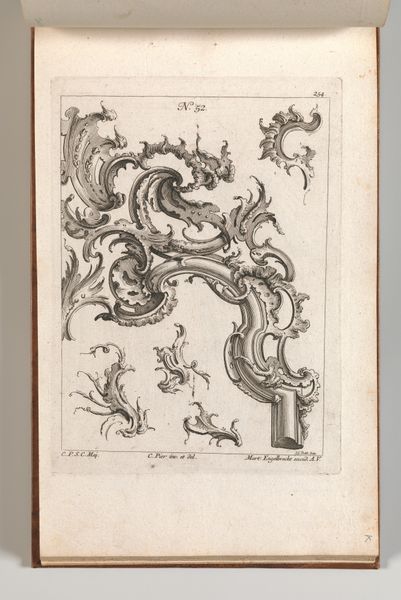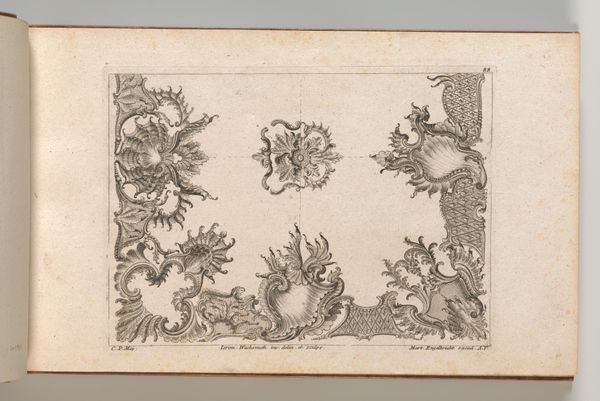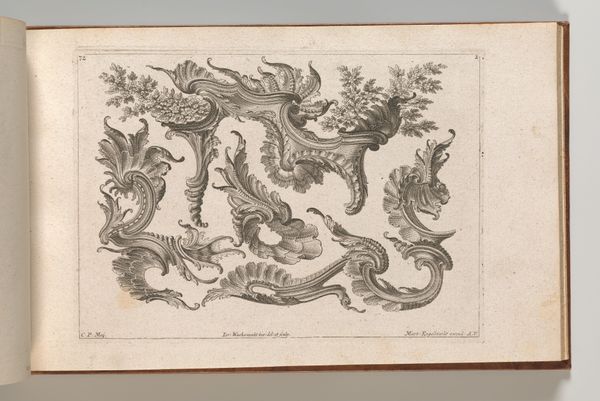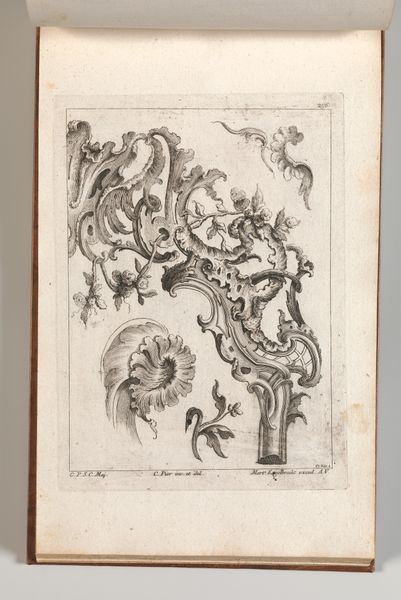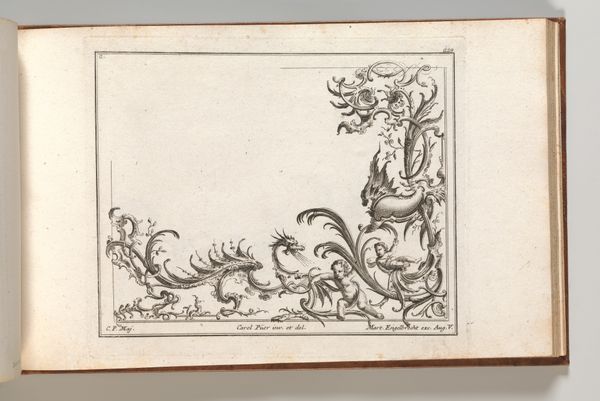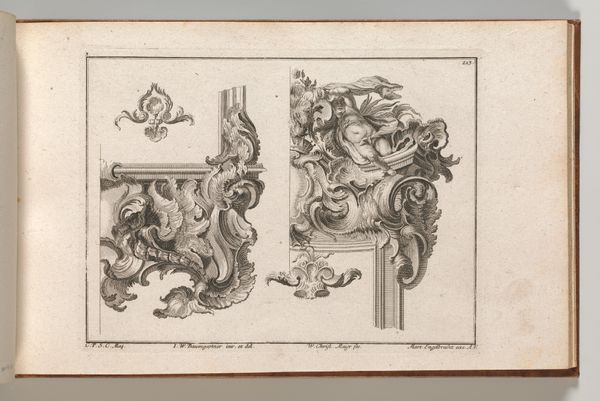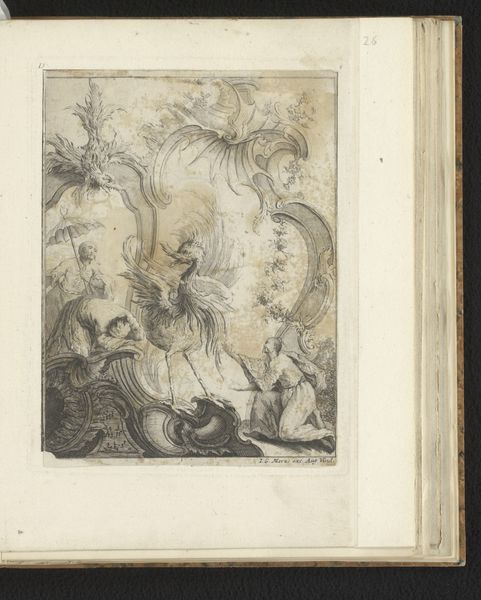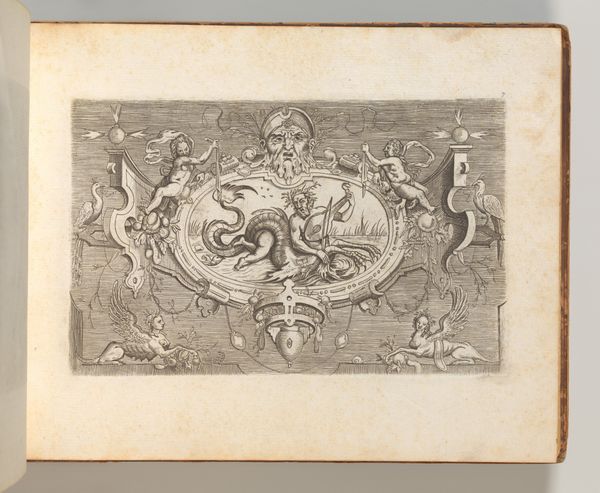
Various Designs for Rocaille Ornaments, Plate 1 from: 'Fortsezung von unterschielichen Auszierungen zu allerleij nüzlich anzuwenden' 1750 - 1756
0:00
0:00
drawing, print, engraving
#
drawing
# print
#
decorative-art
#
engraving
#
rococo
Dimensions: Overall: 8 7/16 × 13 3/4 in. (21.5 × 35 cm)
Copyright: Public Domain
Editor: We’re looking at “Various Designs for Rocaille Ornaments,” an engraving by Jeremias Wachsmuth, dating from the 1750s. I'm struck by how this one page could hold so many distinct but related elements, kind of like a catalog of possible motifs. What can you tell me about how this was likely used or seen in its time? Curator: This print isn't just art; it's a piece of the visual culture industry. Think about the rise of the merchant class in the 18th century. With newfound wealth, they craved ornamentation to signify status, and things like interior decor, furniture, architectural flourishes—all suddenly became signifiers of social standing. A print like this serves as a vital resource for artisans. Editor: So, it's less about high art and more about practical application? Curator: Exactly. These pattern books were hugely influential in democratizing style. Any craftsman could access the latest trends, and that means that Rococo design could trickle down beyond aristocratic circles. It allowed for the wide dispersal and interpretation of the Rococo style. Does the idea of "democratizing style" change your perception of the work? Editor: Absolutely. It frames the print as a powerful tool for cultural dissemination, influencing visual tastes on a broad scale, beyond the direct patronage of wealthy elites. This wasn’t just about art; it was about accessible design ideas. Curator: Precisely. And reflecting on how readily available and utilized those design templates became enriches my understanding of the era’s visual identity. It demonstrates that even something that seems purely decorative has deep social and political roots.
Comments
No comments
Be the first to comment and join the conversation on the ultimate creative platform.
